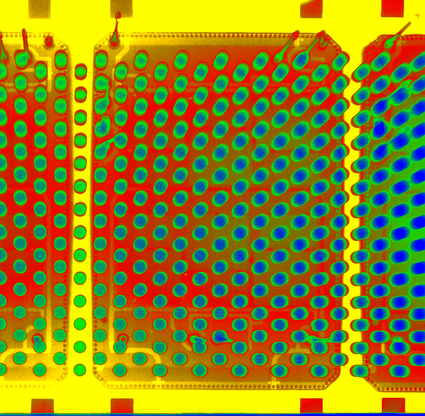The influencing factors of industrial CT detection results
Release time:2024-01-15Publisher:Jeenoce
Industrial CT (computed tomography), as an advanced non-destructive testing technology, has been widely applied in fields such as aviation, aerospace, military industry, and national defense. These fields have strict quality requirements for products, and the internal structure, defects, and the type and size of defects directly affect the determination of product qualification. If the laboratory wants to obtain high-quality CT images, it needs to control the above three factors. The following mainly analyzes the factors that affect spatial resolution, density resolution, and artifacts.

spatial resolution
Spatial resolution refers to the ability to distinguish specific minimum geometric details from CT images, quantitatively expressed as the minimum distance between two detail features that can be distinguished. Spatial resolution is the primary factor affecting image quality, which is influenced by the effective beam width. The smaller the effective beam width, the higher the critical spatial resolution of the system in a physical sense
Density resolution
Density resolution, also known as low contrast resolution, is the ability of a system to distinguish the difference in ray attenuation coefficients (contrast) of a given object's fault section. Quantitative representation is the minimum contrast between details that can be distinguished on a given area and the substrate material. The factors affecting density resolution include image noise, pixel width, empirical coefficient, etc. Among them, an important factor affecting the density resolution of CT systems is system noise. As the noise increases, the contrast of the smallest object that the CT system can distinguish also increases.
Pseudo image
Artifacts are image features that do not match the physical structure of an object. There are many reasons for producing artifacts, and a series of errors during the measurement process can cause inconsistency in the measurement data, resulting in artifacts, such as insufficient mechanical system accuracy, unstable output energy of the radiation source, insufficient penetration force, uneven detector channels, and high circuit noise in the data acquisition system. It should be noted that improper scanning technology can cause serious artifacts. Therefore, Whether the testing personnel have sufficient experience is also an important factor affecting the generation of artifacts.

